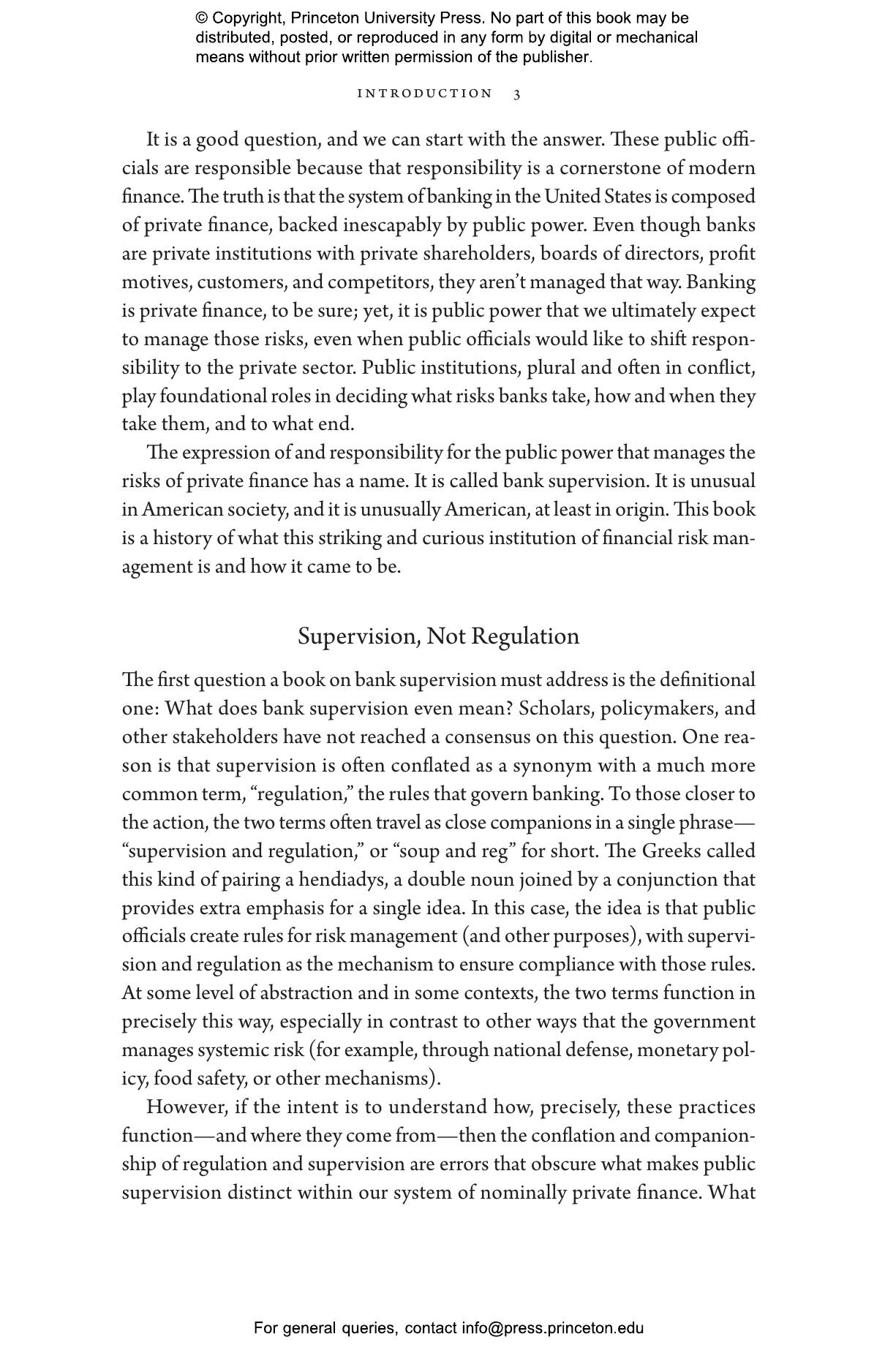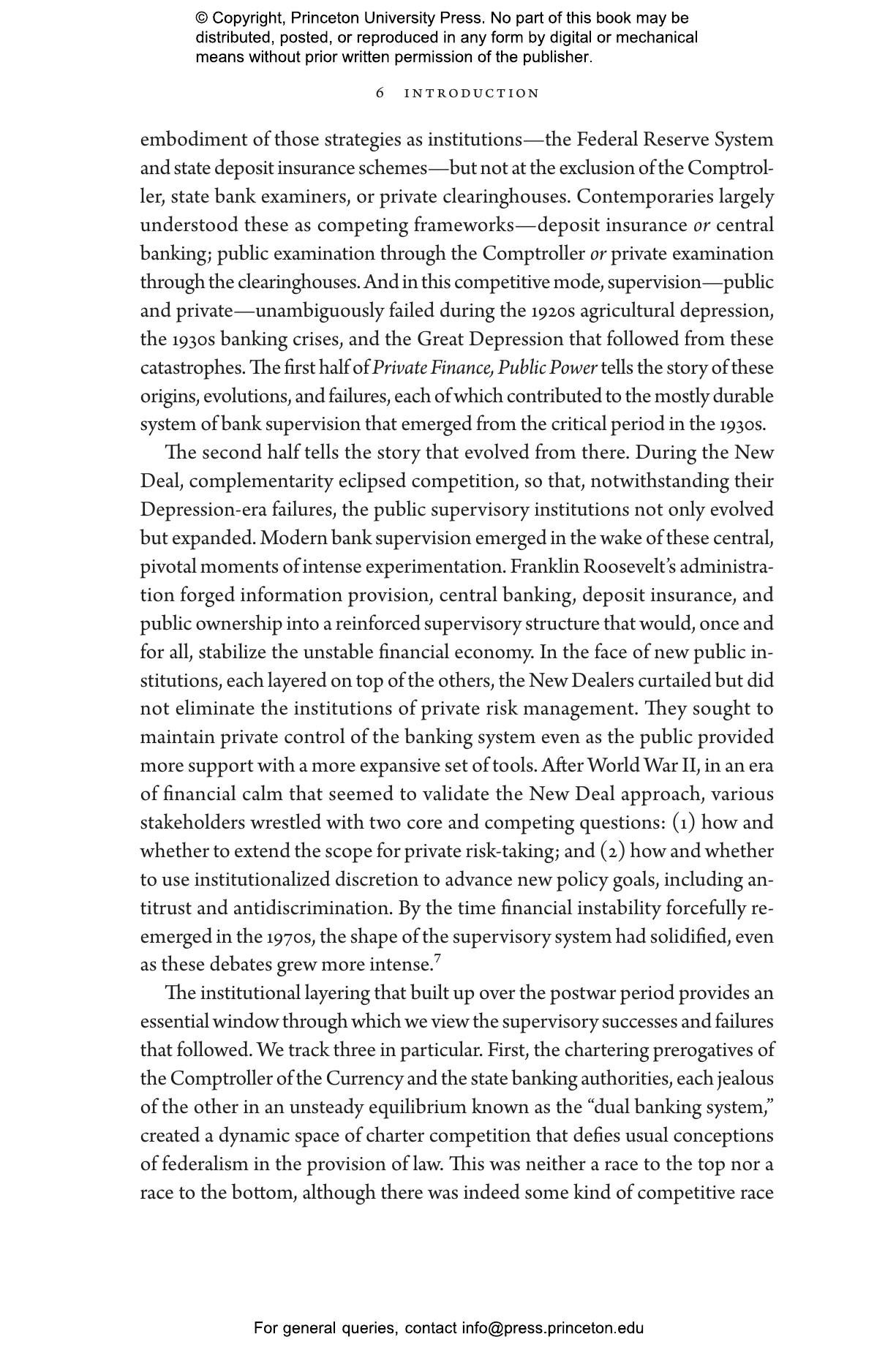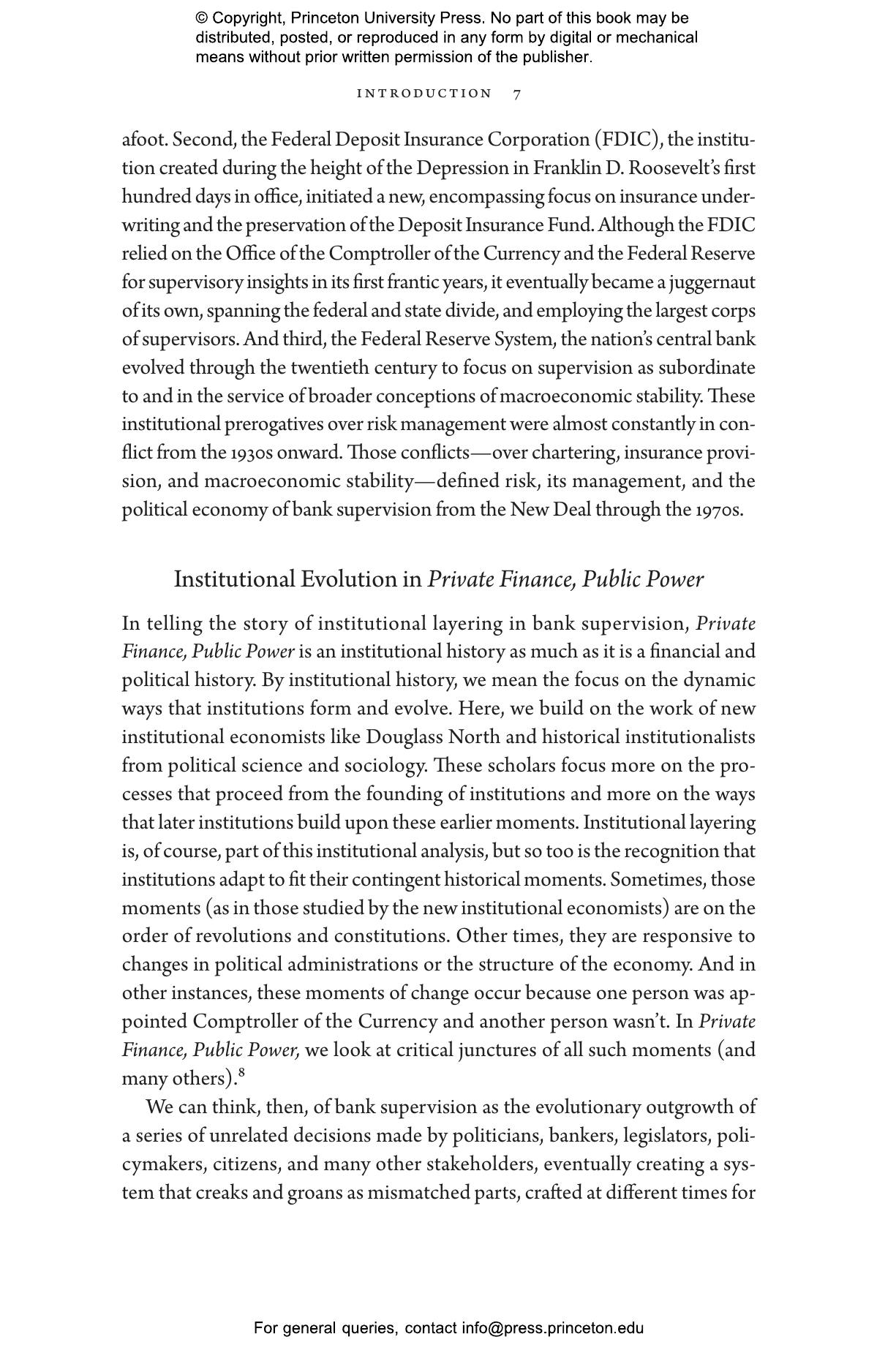Banks in America are private institutions with private shareholders, boards of directors, profit motives, customers, and competitors. And yet the public plays a key role in deciding what risks are taken as well as how, when, and to what end. Public-private negotiations over financial governance has evolved into an essential ecosystem of banking risk management. In Private Finance, Public Power, Peter Conti-Brown and Sean Vanatta offer a new history of finance and public policy in the United States by examining the idiosyncratic way the nation manages financial risk across the public-private divide. Covering two centuries, from the founding of the Republic to the early 1980s, Conti-Brown and Vanatta describe the often-contested, sometimes chaotic, engagement of bankers, politicians, bureaucrats, and others in the overlapping spaces of the public-private system of bank supervision.
Conti-Brown and Vanatta trace the different supervisory frameworks that evolved over time, from the imposition of private liability on bank shareholders to the development of the central bank to the creation of federal deposit insurance. Negotiations took place at federal and state levels, but, over time, the federal government assumed most of the responsibility for managing financial risk. Moreover, federal supervisory officials began to undertake more varied tasks, including monitoring racial discrimination and managing financial concentration. Conti-Brown and Vanatta introduce a diverse cast of characters—bankers, politicians, bureaucrats, and others—and show how they navigated two hundred years of financial panics, scandals, and crises to build the system that structures modern America’s banking system.
Peter Conti-Brown is the Class of 1965 Associate Professor of Financial Regulation at The Wharton School of the University of Pennsylvania and a nonresident fellow in economic studies at the Brookings Institution. He is the author of The Power and Independence of the Federal Reserve and the coauthor of The Law of Financial Institutions. Sean H. Vanatta is senior lecturer in financial history and policy at the University of Glasgow and nonresident fellow at the Julis-Rabinowitz Center for Public Policy and Finance at 91ÌÒÉ« University. He is the author of Plastic Capitalism: Banks, Credit Cards, and the End of Financial Control.
32769
"Conti-Brown and Vanatta, through deep historical research and tales of key individuals, chart the U.S.'s bank supervisory pendulum from the Constitution through the 1970s. It's a story of competing theories of capitalism, banking and risk management that is essential reading for the modern moment. As a wave of new bank regulators descends on Washington less than two years after three historic bank failures, bank supervision is at a pivotal moment. "Private Finance, Public Power" holds countless insights for bank supervision stakeholders to at least only make new mistakes."—Steven Kelly, American Banker
“Conti-Brown and Vanatta have written a brilliant history of the murky realm of banking supervision. Recovering over two centuries of intense conflict and negotiations over risk within America’s banking system, the authors explain how the federal government readily absorbed the vital responsibility of managing financial risk. This sweeping history is a must-read for anyone interested in understanding the origins of our modern financial system.”—Julian Zelizer, 91ÌÒÉ« University
“Conti-Brown and Vanatta masterfully illuminate the historical evolution of bank supervision from a regular assessment of an individual bank’s financial condition into the sweeping system of institutionalized discretion over every aspect of the banking system we have today. This pathbreaking and careful historical account will be critical in the coming debate on bank supervision between those who want to defend the role of government discretion in moderating private risk taking and those who want to ensure that government action is always grounded in transparency and due process.”—Randal Quarles, Former Vice Chair of the Federal Reserve
“In a book that manages to be both weighty and entertaining, Peter Conti-Brown and Sean Vanatta establish the pivotal role of discretionary supervision in the history of American banking regulation. In showing the persistence of key policy debates through major changes in the scope of supervision, they illuminate the important issue of defining public and private responsibilities for banking practices and stability that is still with us today.”—Daniel K. Tarullo, Harvard Law School
“Supervision is the backbone of bank oversight in the United States and around the world. In their landmark book, Private Finance, Public Power, Conti-Brown and Vanatta pull away the curtain of opacity that has long shielded bank supervision from public view. They reveal supervision to be a constantly evolving set of relationships and practices that shape private risk-taking and public administration. In the process, they provide important new insights into a host of contemporary debates on matters ranging from how best to promote the health of the financial system to the dangers and benefits of regulatory discretion. It is required reading for everyone who wants to understand how best to promote financial stability, state capacity and the way public and private actors have cocreated today’s financial system.”—Kathryn Judge, Columbia Law School
This publication has been produced to meet accepted Accessibility standards and contains various accessibility features including concise image descriptions, a table of contents, a page list to navigate to pages corresponding to the print source version, and elements such as headings for structured navigation. Appearance of the text and page layout can be modified according to the capabilities of the reading system.
Accessibility Features
-
WCAG v2.2
-
WCAG level AA
-
Table of contents navigation
-
Single logical reading order
-
Short alternative textual descriptions
-
Print-equivalent page numbering
-
Landmark navigation
-
Index navigation
-
Epub Accessibility Specification 1.1
-
ARIA roles provided
-
All non-decorative content supports reading without sight
-
No known hazards or warnings











































